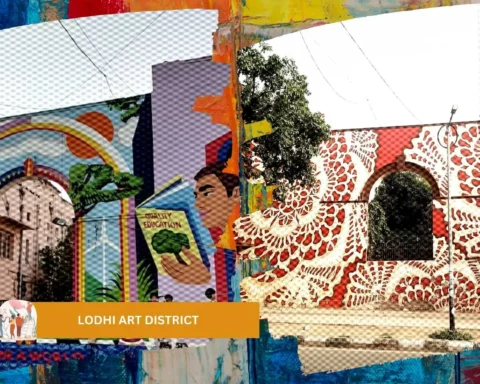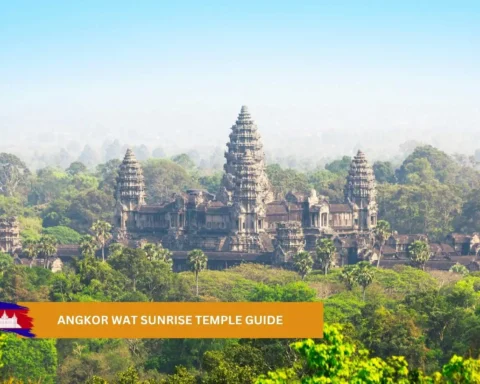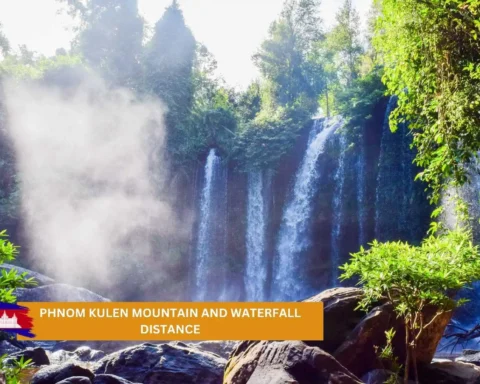Preah Vihear Temple, or Prasat Preah Vihear, is Cambodia’s most spectacular and ancient site. In this Preah Vihear temple travel guide, we will go over the UNESCO World Heritage Site and understand why it fascinates tourists, history buffs, and culture aficionados. Picturesquely atop a cliffside gazing out over the Dângrêk Mountains, the temple offers stunning vistas and tranquil ambiance that make it a place not to be overlooked by all who visit Cambodia’s storied past and rich cultural heritage.
Table of Contents
The Historical Significance of Preah Vihear Temple
Preah Vihear Temple dates back to the ninth century, with building extending over several centuries under the sponsorship of various Khmer Empire kings, including Yasovarman I, Suryavarman I, and Suryavarman II. Whereas the other Khmer temples had shorter north–south axes, Preah Vihear was designed on a lengthy north–south axis. This configuration traces the mountain’s form and offers the pilgrims an extraordinary spiritual experience. The temple was consecrated to the Hindu deity Shiva in his forms, such as Sikharesvara and Bhadresvara, the mountain deities, expressing the Khmer Empire‘s intense spiritual affinity with religion and geography.
The temple’s sacred history is also complemented by the fact that it has served as a sacred refuge and a witness to Khmer Empire architecture. As the building progressed, each ruler contributed their share, leading to the mixed appearance of the architectural works and an exceptional linear design, different from the other Khmer temples’ relatively rectangular design. Once Hinduism declined, the site was repurposed for Buddhist use, raising its cultural status.
Architectural Marvels and Panoramic Views
Preah Vihear Temple reflects the artistry and ingenuity of the Khmer. The temple compound is laid out along an axis, accompanied by a series of pavements and stairways which lead the pilgrim through imposing gopuras to the central sanctuary at the summit. Every gopura is adorned with elaborate sandstone sculptures of Hindu gods and mythological events illustrating the craftsmanship and artistic prowess of the Khmer Empire.
The principal sanctuary, which is dedicated to Shiva, is the secular and spiritual center of the temple. From this high vantage point, tourists are blessed with stunning views of the surrounding Cambodian and Thai plains, a serene and spectacular vision unlike any other temple. The humbling location and breathtaking views make the Preah Vihear temple travel guide a photographer’s paradise, while offering some stunning views to the everyday traveller as well.

UNESCO World Heritage Status and Preservation Efforts
The Preah Vihear Temple was inscribed on the UNESCO World Heritage site, along with world-famous Angkor Wat, as Cambodia’s second precious monument. This has put the world’s spotlight on the temple as Cambodia’s symbol of cultural and historical achievement, and on the conservation activities being carried out there. UNESCO and the government of Cambodia have established committees to safeguard the integrity and authenticity of the location.
Conservation is difficult due to the location and susceptibility of the temple’s sandstone spires. Restoration efforts aim to preserve the temple from natural and human effects so that future generations can maintain its glory and integrity. The temple’s designation as a UNESCO World Heritage site also points towards it being a symbol of peace, respect, and coexistence among nations and human beings.
Preah Vihear Temple Travel Guide
Travelling to Preah Vihear Temple in itself is an adventure. Preah Vihear Temple lies in the province of Preah Vihear, north of Phnom Penh and northwest of Angkor. Travellers usually begin from Siem Reap, the entry point to the Angkor temples and a lively city full of hotels, restaurants, and cultural sights. From Siem Reap, the road to Anlong Veng is fully sealed, and the extension to Preah Vihear is the best road in Cambodia.
To make the ideal visit, it is recommended that one rent a four-wheel-drive car or motorbike and drive up the sloping temple approach road. A small scooter will also do, but for a single traveller with light luggage. At the entrance, tourists have to buy an entrance fee and walk, either on local transport or on foot, to the temple compound.
The Preah Vihear temple travel guide is best enjoyed between the dry season from November to April, when the weather is warm and the stunning views are at their best. Visitors should dress sensibly, covering knees and shoulders, and wear smart shoes to walk over the extensive grounds. Temple exploration and its environs usually take two hours, making for a good day trip or portion of a longer program incorporating other nearby sites like Koh Ker temple, Beng Mealea, and Anlong Veng.
Exploring the Area Outside the Temple Complex
Preah Vihear province has more than the temple. The area is also home to the Kulen Promtep Wildlife Sanctuary, Cambodia’s largest protected area and a bird and nature lover’s paradise. Guided bird-watch treks allow for identifying a wide variety of bird life in its natural habitat, while forest and grassland trekking allow a glimpse into Cambodia’s breathtaking biodiversity.
Visitors also have an opportunity to experience local culture by visiting the Preah Vihear markets, trying Cambodian street food, and shopping for souvenirs. The busy markets provide an insight into daily life and an opportunity to socialize and greet friendly locals. To experience Cambodian rural life and customs in depth, take a village tour and experience rural life.
Close by, the provincial town of Tbeng Meanchey makes an easy base to stay and take day trips out to see the area. From there, tourists can proceed to other old temples, including the Preah Khan Kampong Svay and Koh Ker temple, both famous for their size and historical status. The temple complex of Koh Ker itself is renowned for its Shiva pyramid and numerous forgotten temples, and so would be an excellent addition to any temple tour.
Neighbouring Sites and Further Travel
Preah Vihear is only one of the numerous wonderful places in northern Cambodia. Koh Ker temple complex, with its towering pyramid and historic ruins, reveals the tenth-century Khmer Empire capital. Beng Mealea, another massive temple complex, is famous for its eerie atmosphere and rare northeast orientation, a serene counterpart to the more visited Angkor temples. The region’s natural landscape, from rice paddies to rural towns and Phnom Kulen hills, is a stretch of discovery potential and cross-cultural interaction.
For those based in Siem Reap, it can be done as a day trip, but instead, spend the night in Tbeng Meanchey or nearby, with some time to visit other sites around the area at one’s convenience. Siem Reap is a lively hub with many restaurants, congested markets, and cultural activity, ranging from apsara dance classes to boat cruises on Tonle Sap Lake.
Tips for a Memorable Visit
Try the following tips to make your Preah Vihear temple travel guide more enjoyable. It is best to reserve transport and lodging early, especially at non-peak travel times. The temple site is relatively large, so spend at least a couple of hours walking through the complex, viewing the elaborate carvings, and experiencing the sweeping views. There is a half-day tour for brief-stayed travellers, but a day provides a more comfortable and interactive temple life.
There is a limitless variety of topics for cameras to snap for amazing pictures of the temple architecture and scenery. Pack binoculars for bird-watching and a camera to take snapshots of your valuable experience. Respect local culture by dressing modestly and treating monks and other travellers respectfully.
The Cultural and Political Legacy of Preah Vihear
Preah Vihear Temple’s cultural importance involves more than the temple’s spiritual and architectural success. Preah Vihear Temple has been the cause of contention between Cambodia and Thailand over a long-standing border conflict, a struggle that has determined its contemporary history and international fame. The twentieth-century ruling by the International Court of Justice granted the temple to Cambodia, a ruling subsequently upheld. Even with such judgments, the temple was classically not open to everyone, and the complex was occasionally so during the Khmer Rouge rule and the Cambodian civil war years.
The temple’s tragic past has been integrated into the broader history of Cambodia’s twentieth century, such as the Khmer Rouge’s destructive potential and Cambodia’s struggle to preserve its cultural heritage.

Conclusion
Preah Vihear temple travel guide is an unforgettable and unique place that weaves rich history, architectural excellence, and dramatic natural beauty together. Its designation as a UNESCO World Heritage Site reinforces its global importance, and its cliff-edge location provides visitors with a dramatic setting and panoramic vistas that have no equal in Cambodia. The temple’s linear design, intricate carvings, and sacred sanctuary render it a landmark to those who are interested in the history and culture of the Khmer Empire.
Whether you are a history enthusiast, a nature lover, or just a peaceful and inspiring visitor, the Preah Vihear Temple is an ideal destination for all. Combining its spirituality, beauty, and natural grandeur, it is one of Cambodia’s greatest treasures and the crown jewel of any Preah Vihear temple travel guide.
Discover the essence of Cambodia, from its rich culinary heritage and vibrant culture to awe-inspiring historical landmarks and emerging business landscapes. Explore our Cambodia destination page and uncover the stories, flavors, and opportunities that await.









